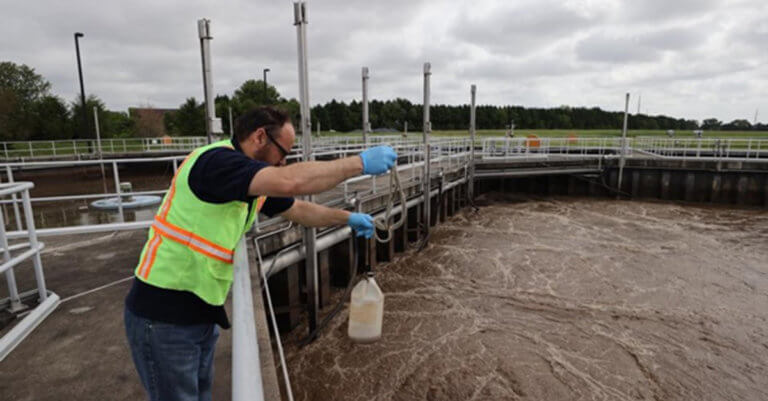
Photo: New Castle County Government, Delaware
Tracking COVID-19 Outbreaks via Wastewater Analysis
It’s not something we typically think of, but every time you, a member of your household, or the coworker in your office (assuming anyone is working there now) flush, a wastewater sample is created, and that sample can be analyzed for all sorts of interesting things like: the medications you are taking, illicit drug use, and tell-tale signs of your health, such as disease. Wastewater epidemiology is a thing.
Studies now show traces of SARS-CoV-2 (the virus that causes COVID-19) can be found in human feces. “We know that SARS-CoV-2 is shed in stool, which means it can be collected in sewage systems,” said Megan Murray of the Harvard T.H. Chan School of Public Health. The detection of the new coronavirus in sewage samples, “has correlated very nicely with the arrival of COVID-19 into different communities.” She reported, “significant amounts of viral material” were detected in Boston wastewater samples weeks before cases were documented.
By testing samples of sewage collected at municipal wastewater treatment plants, researchers and officials hope to uncover the scale of COVID-19 in a community. The data may prove especially useful in locations where wastewater samples indicate the virus has spread more widely than individual testing has revealed. These differences are not hard to understand. Delayed clinical testing, potential prevalence of asymptomatic individuals not being tested, and poor laboratory and method performance, are well known issues. As a sober example, Johns Hopkins researchers reported in the Annals of Internal Medicine that swab tests will result in a 67% false negative if the individual is four days after infection and 38% if they are on the first day of experiencing symptoms.
According to Peter Grevatt, CEO of the nonprofit Water Research Foundation, private and public microbial testing laboratories are testing wastewater for the novel coronavirus’ genetic signature. “Several labs have achieved a proof-of-concept in terms of demonstrating the ability to detect the RNA of the virus in wastewater.”
Water utilities throughout the United States and the world are currently collecting wastewater samples and conducting analysis on their own. In a more formal approach, Finland, Germany, and the Netherlands have launched national wastewater surveillance programs. With this rush to testing, you may wonder about sample collection and laboratory procedures, as well as data-usability considerations. Important factors include:
- Where in the wastewater treatment system is a sample best collected?
- What are the most appropriate sample-preservation practices?
- When, during the course of infection, do people shed SARS-CoV-2 in their feces?
- Does the amount of SARS-CoV-2 shedding vary depending on the severity of the case?
- Do matrix factors (presence of other viruses, sample pH, sample temperature, components of water quality such as mineral content, ) affect the detection of the SARS-CoV-2 RNA?
- How can all of these factors be extracted to most accurately reflect the presence of COVID-19 in a population?
To address the analytical concerns, the Water Research Foundation has initiated an interlaboratory and methods assessment of the SARS-CoV-2 genetic signal in wastewater, to be completed Summer of 2020. It has identified over 50 laboratories that have expressed an interest in the study. The Foundation will send split wastewater samples collected by several municipalities to all the participating laboratories and have them analyze the samples according to their current procedures. The laboratory results will then be compared, and laboratory best practices developed and published for worldwide use.
Wastewater epidemiology and microbial testing laboratory quality assurance/quality control may likely play a role in critical policy decisions. Cool science saving lives and lifting quarantines. Look for a follow‑up article on the results of the inter-laboratory study and how this concept can be applied in future pandemics (or to help stop them from becoming pandemics).

